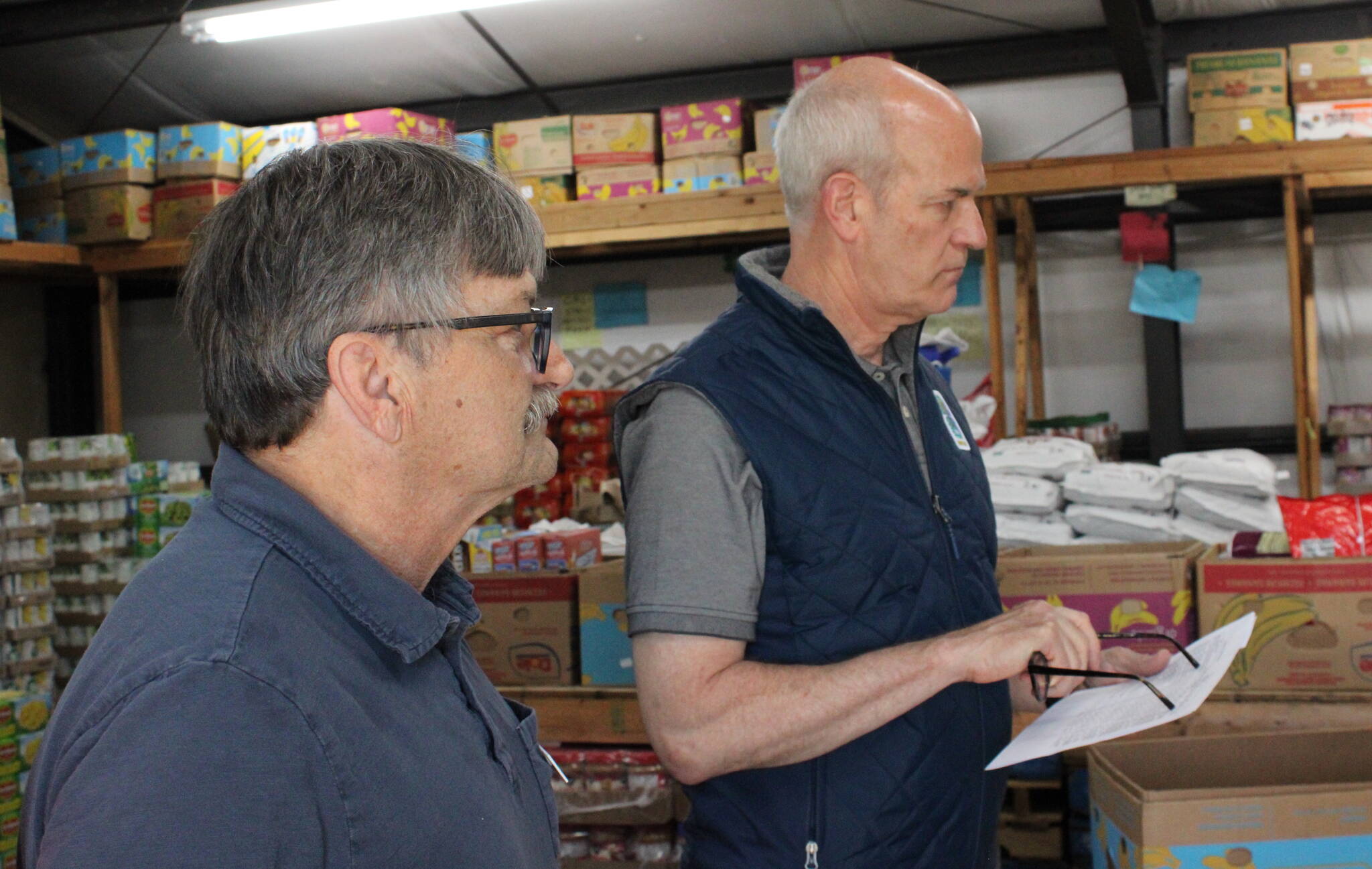U.S. Rep. Rick Larsen met with members of the North Whidbey Help House on Tuesday to discuss how potential cuts to a federal food assistance program could affect the food bank’s ability to adequately aid those in need as demand for services grows.
Operational since 1977, the Help House is the main food bank serving Oak Harbor and the north end of the island. Food is available at no cost to low-income recipients and is intended to be supplementary, or used in an emergency, as the Help House is a distributor of The Emergency Food Assistance Program, or TEFAP.
TEFAP is a federal program meant to help those struggling with food insecurity.
Through TEFAP, the U.S. Department of Agriculture purchases food and distributes it to state-level assistance agencies depending on how many people in each state are unemployed and how many people are living below the poverty line. Those state agencies select certain organizations, among those eligible, to distribute their food to communities locally. Local distributors receive TEFAP food once a month.
Larsen, a Democrat, said TEFAP is not directly under attack, but that that the Supplemental Food Assistance Program, or SNAP, is facing cuts. It is also a program aiding those affected by food insecurity and run by the USDA Food and Nutrition Service.
Tuesday, Senate Republicans passed President Donald Trump’s bill, formerly known as the “One Big Beautiful Bill.” Along with slashing Medicaid, the bill threatens to force states to help pay for SNAP — which is completely federally funded at present — and to change work requirements which determine eligibility for the program.
Jean Wieman, executive director at the Help House, explained to Larsen that 80% to 85% of the people they serve are also SNAP recipients. If SNAP distribution and eligibility are affected, the Help House could see even more demand for its services during a time in which need is already increasing.
According to annual reports, the Help House served 10,445 people in 2022, 15,025 people in 2023 and 16,387 people in 2024. Wieman explained to Larsen that the Help House is also seeing new trends emerge in the demographics of recipients. More and larger families, more young adults and more new faces are in need of supplementary food, and some folks are returning to the Help House after no longer needing assistance.
While there is no such report available for this year, Shawn Durbin, the deputy director, noted the Help House’s demand has even increased since January.
Wieman said she appreciates the fact that Larsen takes the time to check in with the food banks in his region, something he’s done for years.
“We’re the feet on the ground,” she said, “so I think that’s kind of why he’s interested in talking to us and making sure that we’re getting what we need.”



